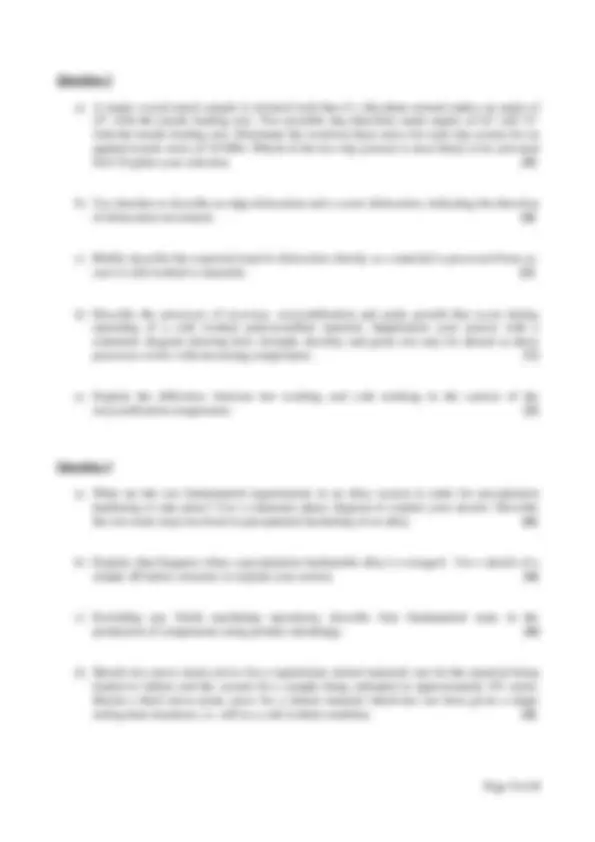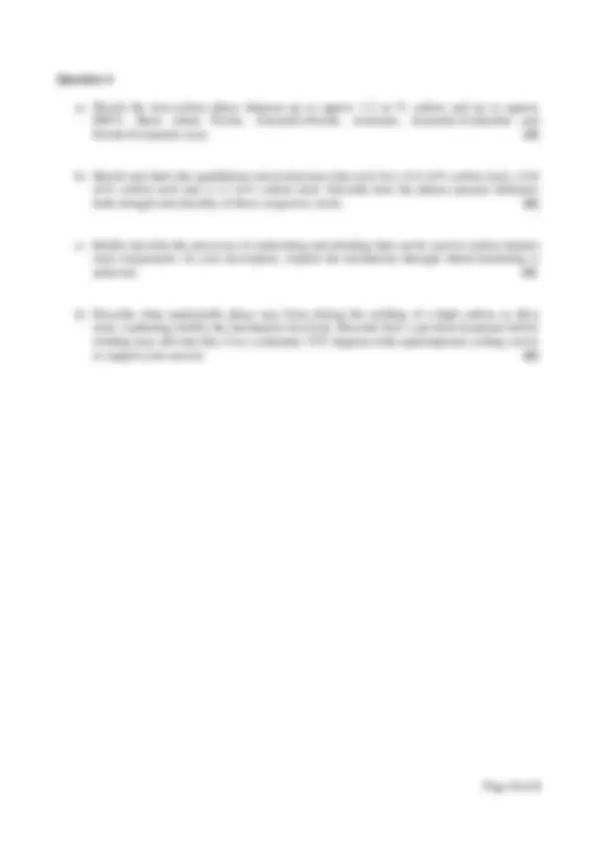




Study with the several resources on Docsity

Earn points by helping other students or get them with a premium plan


Prepare for your exams
Study with the several resources on Docsity

Earn points to download
Earn points by helping other students or get them with a premium plan
Community
Ask the community for help and clear up your study doubts
Discover the best universities in your country according to Docsity users
Free resources
Download our free guides on studying techniques, anxiety management strategies, and thesis advice from Docsity tutors
Main points of this past exam paper are: Strength, Stiffness, Ductility, Toughness, Hardness, Vickers, Brinell, Rockwell Hardness Tests, Bonding Energy, Atomic Bonds
Typology: Exams
1 / 4

This page cannot be seen from the preview
Don't miss anything!



Exam Code(s) 3BM, 3BG, 3BSE Exam(s) 3 rd^ Mechanical Engineering 3 rd^ Biomedical Engineering 3 rd^ Energy Systems Engineering
Module Code(s) ME Module(s) Metals and Metal Processing
Paper No. 1 Repeat Paper
External Examiner(s) Prof. Robin Clarke Internal Examiner(s) Prof. Sean Leen Dr. Mark Bruzzi Dr. Barry O’Brien*
Instructions: (^) This paper contains 4 questions. Answer 3 questions.
No. of Pages 4 including cover sheet Department(s) Mechanical & Biomedical Engineering Course Co-ordinator(s) Dr. Barry O’Brien
Requirements: MCQ Handout Statistical/ Log Tables Cambridge Tables Graph Paper Log Graph Paper Other Materials
Release to Library: Yes
a) Give brief definitions for strength, stiffness, ductility, toughness and hardness. [3]
b) Describe the difference between Vickers, Brinell and Rockwell hardness tests in terms of indentor types, loading conditions and features measured during or after loading. [4]
c) Figure Q1 (c) illustrates a bonding energy curve for two different atomic bonds (material 1 and 2). Which material has the highest melting point and which material has the highest elastic modulus? Provide brief explanations for your answer with respect to the curves. [4]
d) Explain why metals have higher thermal and electrical conductivity than other materials. [4]
e) Sketch a (001) plane and a (110) plane in a simple cubic crystal structure. [2]
f) Sketch a (111) plane for a Face Centred Cubic (FCC) crystal structure. On this plane show three close packed directions. What is the significance of close packed planes and directions? [3]
Figure Q1 (c)
a) Sketch the iron-carbon phase diagram up to approx 1.2 wt % carbon and up to approx 900°C. Show where Ferrite, Austenite+Ferrite, Austenite, Austenite+Cementite and Ferrite+Cementite exist. [4]
b) Sketch and label the equilibrium microstructures that exist for a 0.4 wt% carbon steel, a 0. wt% carbon steel and a 1.2 wt% carbon steel. Describe how the phases present influence both strength and ductility of these respective steels. [6]
c) Briefly describe the processes of carburizing and nitriding that can be used to surface harden steel components. In your description, explain the mechanism through which hardening is achieved. [4]
d) Describe what undesirable phase may form during the welding of a high carbon or alloy steel, explaining briefly the mechanism involved. Describe how a pre-heat treatment before welding may alleviate this. Use a schematic TTT diagram with superimposed cooling curves to support your answer. [6]